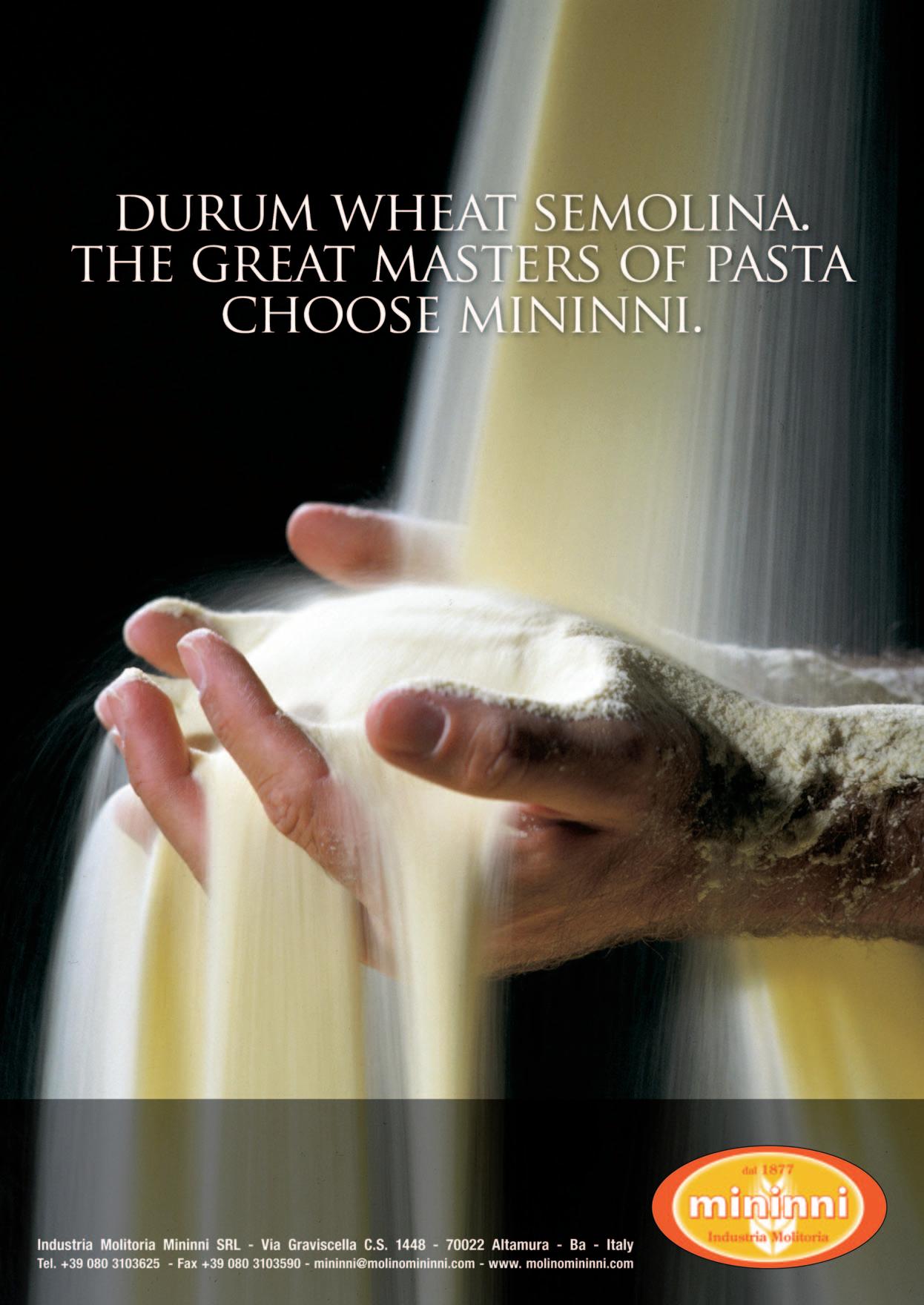Professional PASTA
Research and technology at From Seed to Pasta Congress






Chairman
Claudio Vercellone






Chairman
Claudio VercelloneEditor in Chief
Claudio VercelloneScientific and technical coordinator
Mia Marchini
PhD in Food Science
Scientific and technical committee
Maurizio Monti Wheat and flours technician
Roberto Tuberosa
Agricultural Genetics
Editing
Lorenzo Bellei Mussini ufficiostampa@avenue-media.eu
Advertising
Massimo Carpanelli carpa@avenue-media.eu
Edition, management, editorial, advertising and administration
Avenue media Srl
Viale Antonio Aldini, 222/4 40136 Bologna (Italy) avenuemedia@avenue-media.eu www.avenuemedia.eu
Subscriptions office abbonamenti@avenue-media.eu
Subscription
Ue countries € 45.00
Outside Ue € 60.00
Back issues (if available): € 15.00 each plus postage
MIG - Moderna Industrie Grafiche Srl Via dei Fornaciai, 4 - Bologna (Italy)
Registration N. 7875 of 9/9/2008 Court of Bologna
All coprights belong to Avenue media Srl May not be used without permission Responsibility of the advertisements belongs to the firms
Personal data processing in accordance with Regulation (EU) 2016/679. Privacy Policy is available on Avenue media website www.avenuemedia.eu on
“Privacy Policy - Publishing” page: www.avenuemedia.eu/en/privacy-policy-specialist-publishing/
Durum wheat consumption trend
by Carlotta De PasqualeFEATURES
PASTA PRODUCTION
Pasta made in the USA
by Andrea MaraschiSUSTAINABILITY
Sustainable agri-food systems
by Lorenza VianelloEVENTS
Innovating the supply chain of durum wheat and pasta

 by Mariangela Latella
by Mariangela Latella
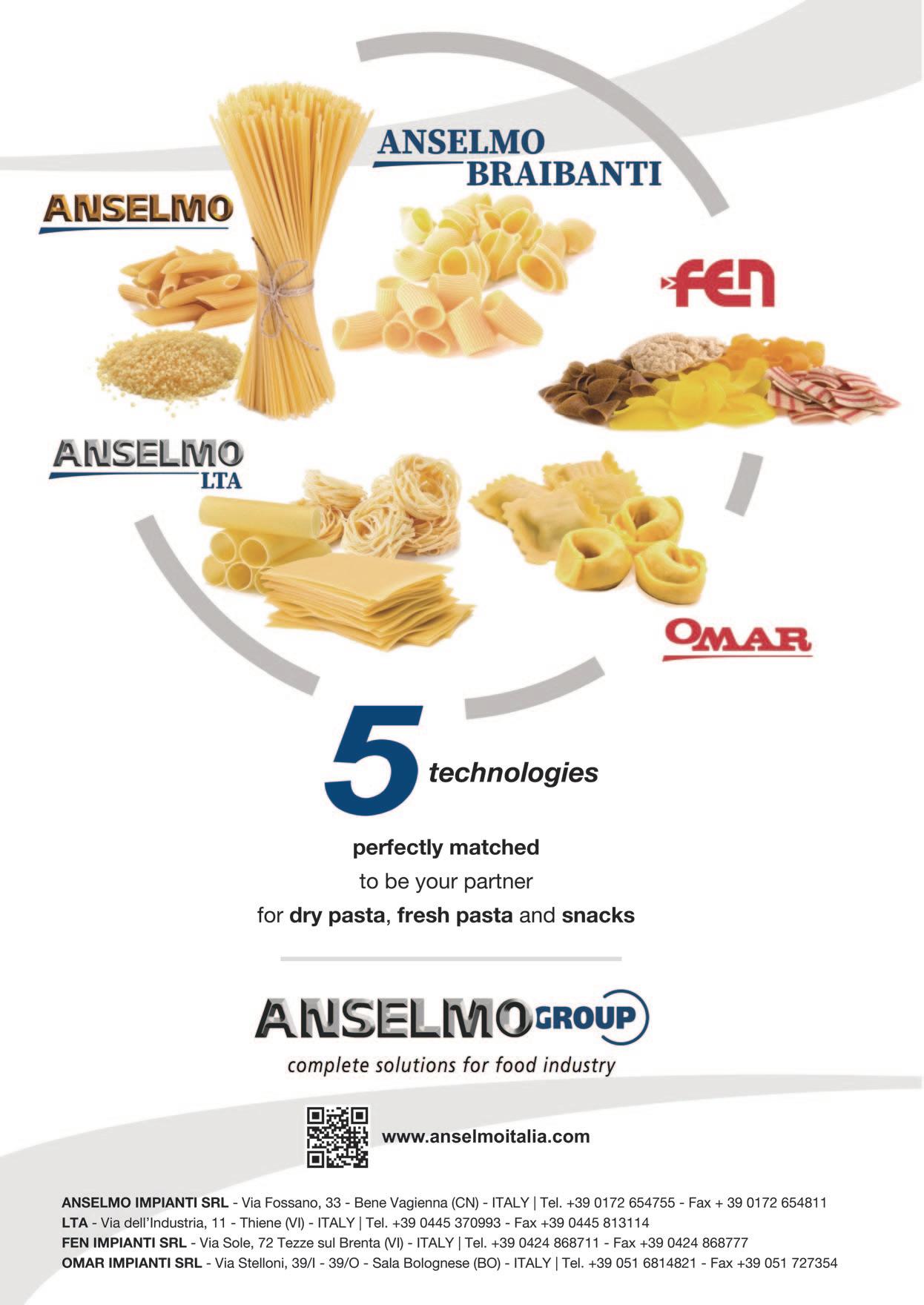




The past year has been particularly intense for agricultural markets, as adverse weather, an unstable geopolitical context, energy inflation and logistical bottlenecks have caused great waves of volatility on most agricultural commodities. As shown in the Figure below, durum wheat was no exception. In summer 2021 a severe drought caused production in Canada to drop by 54% to the historically low level of 3.0 Mt, igniting an unprecedented price rally where quotations peaked at historic records. As Canada is the source
for more than 50% of global imports, the sudden drop in production caused a supply shortage. Despite durum wheat being a commodity for which demand is quite inelastic, the market tried to adapt to the supply crunch. In Italy, in 2021, pasta consumption decreased by almost 7% compared to 2020 and by 3% compared to 2019. In May 2021, Turkey approved an amendment expanding the list of destination countries for pasta containing a percentage of soft wheat. In the USA, durum food usage decreased by 10% compared to the previous MY. However, despite these

adjustments, the tight supply caused prices to soar (+82% between June and October 2021 on Bologna exchange) and ending stocks to shrink in importing countries (mainly Italy and North Africa) in order to meet demand. In June 2022 and throughout the summer prices finally started to decrease, as Canadian crop conditions improved and pushed production outlook above 6 Mt in August from the initial forecast around 5.5 Mt. Nonetheless, Italian prices were quite stiff in their downward trend: while Canadian prices dropped by 33% between June and September, Italian exchange decreased only by 13%. This rigidity was caused by two main factors:
• Production issues with most crops in Europe, as during the summer the continent was swept by the worst drought in 500 years and the hottest average temperatures ever recorded, two factors which took a heavy toll on crops. With specific regard to durum, according to the European Commission data, production has decreased by 7% in Italy (the EU’s main producer), by 16% in France and by 19% in Spain. Total EU production decreased by 11% year-on-year;

• the weakening of the euro, which caused the widening of price spread between export and import markets.
North Africa as well was severely hit by drought during last summer, especially Morocco where production dropped by 67%, causing a 24% decrease in output in the area. As a whole, global production has recovered, but not as much as needed to restore an adequate level on the supply side of the balance sheet. On the one hand, the carryover from last marketing year was low, and on the other hand demand is expected to pick up, as importing countries have to meet the domestic consumption and to replenish their stocks. Therefore, the world stock-to-use ratio does not have much room to improve: it was beneath 20% in 2021/2022, 23% below the 5-years average, and it is expected to further decline in 2022/2023 according to the latest IGC data.
The Mediterranean basin (Europe, North Africa and Turkey) has now approached the planting season, and the final acreage outcome will be the result of farmers’ ponderation of three main factors:
• Production cost, which have also soared during the past year. Energy inflation was at 35% in the Euro area in November, mainly driven by natural gas whose price on the Amsterdam benchmark (TTF) this November was still 45% above November 2021. This has caused a spillover in the fertilizers compartment, as
many are derived from natural gas. Many factories had to shut down production as costs were just too high to be handled (according to fertilizers Europe, production capacity in August was curbed by 70%), and those who remained in business had to raise their products’ sale price. In fact, crops requiring less fertilization (such as soybeans) are more convenient than those with higher needs (such as corn). As for durum wheat, its fertilization requirements are above those of wheat or soybeans, but below corn;
• weather conditions in producing areas. Recent rains in most of the EU eased planting preparations and improved soil conditions, which previously were severely stressed out. Nonetheless, water reservoirs remain at historically low levels, therefore spring precipitations will have to be optimal in order to foresee at least average yields;
• weighing production costs against the outlook for prices and their ratio with other crops. For example, recent durum price downward trend might have given a disincentive to plant it, but at the same time the weakness has been higher in wheat major exchanges. All the above mentioned variables will have to be closely monitored in order to have a better understanding of farmers’ planting choices, both now in the Mediterranean and in North America next spring, as they will be pivotal to determine the future price trends in the durum wheat market. In the meantime, the tight global balance sheet is still the main factor causing the market to be susceptible to external events as well, making it more prone to high volatility as a reaction to any type of endogenous or exogenous shock.

Insomnia is a widespread sleep disorder - millions of people cannot fall asleep or wake up multiple times at night. It is quite difficult to clearly define the reasons that lead to insomnia, yet a correlation between insomnia and diet has been studied. Scholars and experts recommend the intake of foods that help regulate melatonin secretion. In particular, they recommend foods such as pasta, bread and carbohydrates that have tryptophan ingredients and are excellent allies for getting a good night rest if taken in the evening hours during the dinner meal.


Pulmuone, a food company based in Seoul, will increase the production of its heat-and-eat pasta products in the company’s Beijing plant to meet growing demands in China. By establishing the automated pasta production system, the company aims to increase its annual pasta production capacity to about 100 million units from the current 45 million. Pasta accounted for 43% of sales of Pulmuone’s Chinese subsidiary Pumeiduo Foods in 2021. The total sales of Pumeido Foods in the first half of 2022 surged by 35% from the same period a year ago thanks to the rising popularity of refrigerated pasta. The Chinese branch is currently selling various pasta products including tomato meat sauce, tomato seafood, black pepper and cheese & bacon.
Gianluca Di Tondo (in the photo) will be the new CEO of Barilla Group. Former Group Chief Marketing Officer of the Parma-based Group, Di Tondo will take the position of Claudio Colzani (who is leaving the Group after 10 years) as of April 2023.

“In recent years - said the Chairman Guido Barilla - purchasing behaviour, working models and distribution channels have changed. We want to be at the heart of this change and to open our window to the world, so we can always respond to people's needs in the best possible way”. With his vision and experience, Gianluca Di Tondo will drive the company through the transformation process required to become even more competitive in the international markets.

Italian researchers have cooked up a new process for extending the shelf life of fresh pasta by 30 days, using a novel packaging process that also involves applying bioprotective probiotic cultures to the dough. They published this new recipe for better preserving fresh pasta in the journal “Frontiers in Microbiology”.
In fact, after pasta is ready, it is stored in something called Modified Atmosphere Packaging (MAP), which involves removing oxygen and replacing it with other gasses within a package consisting of plastic film. If kept refrigerated, fresh pasta has a shelf life of 30 to 90 days. However, plenty of things can go wrong and compromise the quality of the pasta and even the safety of the product. Some bacteria may survive thermal treatment and grow under the right conditions such as too much moisture. Researchers developed a new “clean-label” method to minimize spoilage problems.

Demand for dry pasta remains strong and there is reason to believe that it will continue to be so in the future, an industry watcher told farmers at the Crop Outlook and International Durum Forum in Minot. The annual event, this year hold Nov. 2-3, draws farmers, elevator managers, pasta industry representatives from durum areas in the United States and Canada. Dry pasta has universal appeal, with 78% or 98 million US households buying the food, said Joe Collins, commodities and risk management director for 8th Avenue Food and Provisions, a consumer products holding company that manufactures and sells private brand foods, including pasta, primarily to retail, food service and ingredient customers, according to the company's web site. Pasta, which is quick, easy and convenient to prepare, makes it an especially attractive meal choice for families with young children, Collins said.



World Pasta Day is celebrated on October 25 every year. The special occasion was first celebrated in 1996 when 40 pasta producers from around the world gathered at the first World Pasta Congress. Since then, on October 25 every year pasta lovers unite to celebrate their favourite dish. To mark the occasion, fresh pasta brand Pasta Evangelists commissioned a new YouGov poll about Britons’ pasta preferences and habits. The answers of 2,000 UK adults crowned Liverpool as the pasta capital of the UK, with 68% of Scousers having a dish of the Italian staple cuisine once a week. As for the pasta dishes that hold a special place in our hearts, carbonara, bolognese, lasagne and mac and cheese won over lesser-known dishes such as ragu, with 79% of people polled admitting to favouring these classics.
The market research study on Pasta & Noodles Market 2022 published by Fior Markets presents in-depth and dedicated scrutiny of the existing stats of the market. The report considers the global Pasta & Noodles market aspects and offers a unique appraisal of the projected market changes during the estimated time frame during the 2022 to 2029 time period. The report studies leading market players along with the various features relating to the market players like company profiles, supply chain value, product specifications, and market shares. This report prepares pursuers to comprehend the scene of the global Pasta & Noodles market by shedding light on the inside and out audit of the expansion drivers, potential challenges, distinctive trends, and opportunities for market members.
The National Pasta Association (NPA) will hold its 2023 Annual Meeting in Ponte Vedra Beach, Florida, from March 19-21. The NPA Annual Meeting is the premier industry event each year that allows for critical conversations to be had and relationship to be built leading to a better and bigger pasta industry. The Annual Meeting brings together pasta manufacturers, millers, ingredient suppliers, pasta equipment manufacturers, and others in the field for industry updates, education, and networking opportunities, including the popular executive one-to-one sessions. The program will feature presentation on a variety or relevant topics, including: a state of the industry report, featuring data and trends in the industry; understanding and influencing modern consumers; pasta solution trend using novelty ingredients; 2023 economy outlooks.


 “Seminary of the History of Science” University of Bari Lecturer in Anthropology of Food Department of Agricultural and Food Sciences - University of Bologna
“Seminary of the History of Science” University of Bari Lecturer in Anthropology of Food Department of Agricultural and Food Sciences - University of Bologna


De Cecco, Granoro, Cocco, Garofalo. These are just a few Italian pasta factories using raw material from the United States in combination with Italian wheat for their products. Considering that Italy is the world leading pasta producer and exporter in the world, this gives an idea of the role of the United States’ wheat production on a global scale. For instance, Garofalo and Rummo use wheat from Arizona, while De Cecco from California and Arizona. Some brands do not name specific American states, while many others simply indicate that their pasta is made with EU and not-EU wheat.
This trend is growing, and may grow even further. On 30 January 2020, the Agricultural Affairs Office of the US Embassy in Rome organised a Pasta Cooking Presentation in which Chef Antonello Riva and US Secretary of Agriculture Sonny Perdue prepared three typical Italian
pasta recipes. Namely, 1) pasta alla gricia with American guanciale and courgettes; 2) pasta cacio e pepe; and 3) rigatoni with Bolognese sauce, made with Black Angus from the Creekstone Farms. Needless to say, they used pasta containing American durum wheat. Durum wheat is one of the most exported products from the US to Italy, since Italy is not able to produce all the wheat necessary to cover its needs. Is this going to endanger the “Made in Italy” brand?


Il mito delle origini (“The myth of origins”) is the title of a recent book by Massimo Montanari, one of the most important scholars in Food studies. This little and exciting study focuses on the


history of the famous “spaghetti with tomato sauce” recipe, and aims to prove a point: even a cornerstone of Italian cuisine today became “Italian” due to a complex series of events. Its origins are anything but Italian, though: dried pasta came from the Middle East, tomato from America, the idea of pasta as a main dish from Naples (not because it was tasty, but because of hunger).
In this sense, making pasta with wheat from the States should not be seen as a “dangerous” sign. It is
an obvious result of today’s food systems, with pros and cons. Wheat is the third most-grown crop in the United States, after corn and soybeans (ca. 55 million acres). Arizona is one of the most important actors within this scenario, alongside California, North Dakota and Montana. Until fifty years ago, the wheat produced in Arizona was not particularly high quality. It had low protein content and was mainly used for cattle breeding. In 1974, however, Albert E. Carleton co-founded with Bill Corpstein the private plant breeding firm Western Plant Breeders (WPB), and later the Arizona Plant Breeders (APB). By crossing several varieties of durum wheat, they created one that possessed a strong gluten trait and was particularly suitable for cultivation in the desert by means of irrigation. This variety was named WestBred 881.

Soon after, they took samples of WestBred 881 to Italy and signed production contracts with important Italian pasta companies. Desert durum had a promising a future ahead.
The technique of drying pasta likely originates from Persia, and this practice was perfected by the Arabs when they conquered those lands during the seventh century AD. As the Caliphate extended from East to West and to the North, the practice spread in the newly-conquered regions: Sicily, Al-Andalus, Maghreb. The long journey of pasta thus began in the large plateau stretching from the Tigris Euphrates River valley to the East, while an important part of its history is now played by the American deserts.
Desert durum is rich in protein and gluten, and its flour is
Durum wheat is one of the most exported products from the US to ItalyWheat field in the United States

characterized by an intense yellow colour. Nowadays it is among the most demanded and expensive wheat varieties in the world. It is cultivated in the low deserts and river valleys of southern Arizona and southern California, where
and then harvested between May and July. It is mostly marketed by firms such as Barkley Seed Inc., Arizona Grain Inc. and Dunn Grain Inc. About 50% of the annual desert durum crop is exported, and Italian companies are the largest importers.

produced every year on average). Northern durum is grown in Montana, North Dakota and Minnesota.
the territory’s weak spot (scarcity of rain) has gradually become its strength. Farmers can dose the required amount of water with extreme precision thanks to irrigation. Desert durum is planted between November and February
Climate change, high demand and ecological sustainability require many countries in the world (starting from Italy) to resort to American durum wheat to achieve the pasta production required for the domestic market and for export. One can go as far as to say that one in three packs of Italian pasta is made with grain coming from abroad, and there is no specific requirement to indicate its origin. Durum is the fifth largest class of wheat grown in the US (ca. 1.6 million metric tons are
American durum is produced and delivered “identity-preserved” to the markets. This means that the unique traits of each variety are maintained at all times, from sowing to harvest, and then when they are transported, processed and shipped.
The United States Department of Agriculture (USDA) report of October 2022 states that wheat prices remain elevated due to uncertainty in the market, to the war in Ukraine which disrupts trade flows in the Black Sea region, and to the decline in the stocks of major exporters. The United States have larger storage capacity than several other exporting countries in the world, even though its stocks are expected to reach the lowest peak since 2007/2008.
Desert durum is rich in protein and gluten, and its flour has an intense yellow colour

Wheat production (especially of Hard Red Winter wheat) has declined because of dry conditions in the Southern Plains.
Considering that Russia and Ukraine export roughly 30% of the world’s wheat, and despite the fact that Russia has had a record production (ca. 95 million metric tons), the situation in the Black Sea region is going to massively affect the logistical capacity to export the crops. While the United Nations have recently established a grain corridor in the Black Sea, the escalation of the war is still a critical factor. Even though Russia could theoretically export up to 42 million metric tons of wheat this year, companies are hardly going to do business with Putin.
“Although food supplies are exempt from Western sanctions in
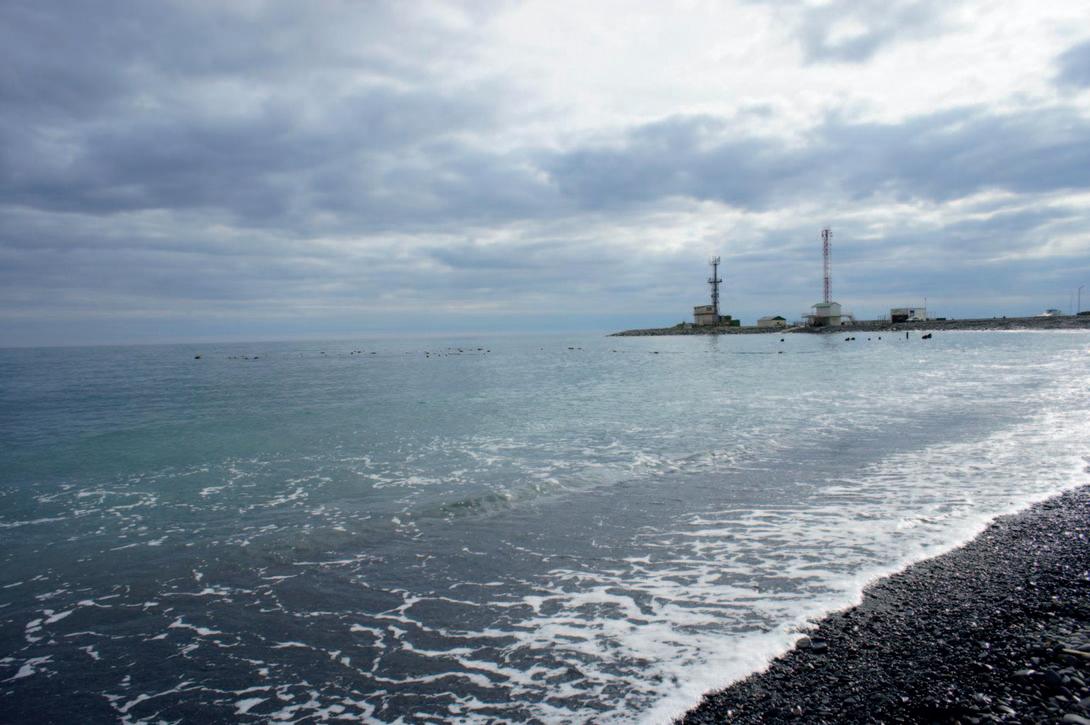
the interests of combating food insecurity, bankers and insurers are wary of doing business with Russia, while shipping lines are reluctant to risk sending their vessels into a conflict zone”, remarked Alexandra Prokopenko, an independent analyst. As an article of Businessinsider.com reads (September 23, 2022), “a perfect storm of economic conditions is keeping (Russia’s record wheat harvest) from being exported”. Aside from logistical bottlenecks, a major role is played by higher government export taxes and the strength of ruble. This economic and political conjuncture is going to eventually favour the role of other exporting countries such as Brazil, Argentina, the United States and Canada.
The president of Italgrani USA (based in St. Louis), North
America’s largest semolina and durum flour miller, recently stated that “Prices are quite a bit elevated from what they were at the end of June and the fears that everybody had at that point have
come to realization”. This, he observed, is going to result in higher costs at grocery stores. Climate change is a critical factor in durum production, obviously. Severe drought conditions have hit Canadian prairies as well as North Dakota, among others.
This economic and political conjuncture could favour the role of other exporting countries

The US harvest has been the smallest in the last sixty years, and similar data have been observed in Canada, where the output of durum has shrunk by ca. 50%. Therefore, durum prices have risen by up to 60% in the province of Alberta, for instance. However, higher prices have not reduced the consumption of pasta. “Even at a higher price”, Neil Townsend, chief market analyst at FarmLink in Winnipeg, observed, “(cereals) are still going to be a cheap carbohydrate and people are going to buy it”. As a consequence, “I don’t think we’re going to see a real dip in demand in North America”, he continued. Yet, this requires that we reflect deeply on what the future holds. The Weekly Weather and Crop Bulletin of 12 October 2022 states that “Despite the benefits of dry weather with respect to summer crops, many key winter wheat areas lacked moisture for even
emergence and proper establishment”. In this sense, wheat breeding is going to be a key resource to outpace the rise of temperatures and all related weather anomalies.

A recent article published in “Nature” (Tianyi Zhang et al., “Climate change may outpace current wheat breeding yield improvements in North America”, September 2022) has focused on the challenge awaiting mankind with regards to variety adaptation to future climate for wheat. The researchers observed that in North America, from 1960 and 2018, yields declined by 3.6% per 1°C warming for advanced winter wheat breeding line, while they declined by 7.5% for advanced spring wheat breeding lines. This data suggests that the adaptation progress is still lagging behind global warming. A potentially
alarming observation, if one considers that “severe to extreme drought affected about 26% of the contiguous United States as of the end of September 2022”, reads the Palmer Drought Index. “Adaptation” is going to be this generation’s most important word. Human beings, animals, plants: all life forms will need to adapt to climate change effects. Germplasm scientists and agronomists are already developing heat-tolerant wheat germplasms. “The United States will work with every nation, including our competitors, to solve global problems like climate change”, President Biden has remarked a few weeks ago before the 77th Session of the United Nations General Assembly. Adaptation and cooperation. Maybe, this generation’s most important words are likely to be two, on second thought.
Andrea Maraschi
 by Lorenza Vianello Sustainability Consultant and Founder of Impatto Vero
by Lorenza Vianello Sustainability Consultant and Founder of Impatto Vero

Food has a strong impact on our lives. It determines our very survival. But food production, as we know it, may have devastating effects both on the environment and on people. The extreme fragility that we witnessed last summer, with unprecedented high temperatures, droughts and floods, require a profound rethink of how we produce food and operate globally. We met researcher Marta Antonelli and asked her what can be done to make agri-food systems more sustainable and resilient.
by Editorial StaffAccording to the European Environment Agency (EEA) an agri-

food system includes materials, processes, infrastructure and operators related to agriculture, together with the sales, transport and consumption of food. At the center of any agri-food system lies our diet, nutrition, the very reason why the system itself exists: food. It is a complex network, that involves various actors and processes, and in which different cultural, economic, political and institutional contexts must interact. Every agri-food systems should have the same objectives: to produce a sufficient amount of food and to maintain the level of quality. In the transition toward more sustainable systems we need to look at agriculture and farming from different perspectives, and to analyze their use and consumption




Marta Antonelli is a researcher and consultant in social and environmental sciences. Her field of specialization is the agrifood sector. She has worked for Italian and European institutes and research centers, including the Roma 3 University, the IUAV University of Venice and the Swiss Federal Institute of Aquatic Sciences and Technologies. She was part of the group of experts who helped the European Commission to develop the legislative framework of the Farm to Fork strategy. She is currently Head of Research for the Barilla Foundation and coordinator of the European Life Climate Smart Chefs project.
of natural resources (water, soil, energy). Every agri-food system requires resources and produces emissions, waste, biodiversity loss, and water scarcity. To give you a dimension, one third of the greenhouse gas emissions produced by human activities comes from the food system. We dedicate 70% of the water to irrigation, and a third of the food we produce either remains in the fields (because it is not worth collecting it) or it is wasted in our homes, commerce and restaurants.
developments, this will reach 70%. Cities consume between 70% and 80% of the food that is produced worldwide. They are the places where the greenhouse gas emissions derived to the food system are most concentrated, and this important fact should be kept in mind while defining decarbonization policies. The city is also an interesting geographical unit for the study of behavioral aspects related to both food consumption and the impact of our choices on health. Life in urban contexts often does not facilitate food choices consistent with the concept of a healthy and/or sustainable diet. In fact, type 2 diabetes is often called “urban diabetes”, because 70% of people affected by the disease live in cities.
During the pandemic the consumption of organic and/or healthy food increased. People were at home and made more careful choices. Now that - at least in Italy - everyone is back in the office, we are going back to previous eating habits. There is one aspect that concerns the act of choosing what to eat that really struck me. Can you describe it? Food is much more present in our everyday lives than we think. Not only because we eat at least three times a day, but also because food involves about 200 of our daily decisions. In 2007 a study by the Cornell University (USA) monitored how many food-related decisions we take daily. Participants first declared 10 to 15 decisions, but when they were asked to think about what, when, how much, at what price, where, with whom they had food, this number rose to over 200 decisions per day, 60 of which were related to what type of food they wanted to eat. It is clearly difficult, therefore, for scientists to encourage more sustainable diets and to nudge us into healthier choices: not only are we unaware of how many decisions we make every day about our diet, but we also underestimate the external factors that influence our choices.
Agri-food systems have different scopes (urban, regional, national etc.) and different characteristics due to their political and geographical contexts. Which of them will be facing the greatest challenges in the next future?
The greatest challenges are experienced by the urban agrifood system. The city is the so-called “geographical unit” where the future of the food systems - and of the people who inhabit the planet - will be played out. Today, more than half of the world population lives in cities; in 2050, barring unexpected

We make up to 200 decisions about food every day



For example, the use of small or large plates affects the amount of food we will eat. Moreover, the food industry has decreased the variety of foods and their local characteristics. Today, people from very different countries eat very similar things.
What about the Mediterranean diet, that is also recognized as an Intangible Cultural Heritage of Humanity by UNESCO? Unfortunately, the Mediterranean diet, with its low environmental impact, is no longer adhered to in Italy. The Mediterranean diet has proven health benefits, for example, in the prevention of cardiovascular and neurodegenerative diseases. It includes olive oil, vegetables but limits the amount of animal protein, especially meat. Actually, compared to 50 years ago, European people consume more than double the amount of meat and, in general, more animal proteins (poultry, fish) than they
need. It is true that since 1995 the consumption of beef has decreased by 10%, but it remains at extremely high levels. We are abandoning healthy diets in favor of diets that are high in calories and rich in those nutrients that we should limit.
Food is connected to well-being but also to climate change. It seems that the challenge requires a complex set of skills. The life expectancy in Europe is very high. However, the period of time in good health is, on average, 10 years less. Nutrition can help to prevent chronic non-communicable diseases such as diabetes, hypertension or cardiovascular
diseases. Urgent policies and actions are needed. There must be a systemic approach on three factors: education and eating habit; agricultural production, and public health management. It is now clear that economic and social conditions greatly affect people’s health and well-being: this is why scientists use the term syndemia. Climate change and malnutrition are strongly connected, and by malnutrition, I mean both undernutrition and overnutrition. These phenomena often coexist in the same country, within the same cities or even within the same families. No country is immune to these nutritional challenges. There is an objective complexity in addressing interconnected issues within, for example, a municipality or a state. There is a lack of dedicated resources, budgets, and also, more simply, of the necessary professional skills. We need multidisciplinary teams made up of experts and researchers from different

In Europe, the main challenge is to fight food waste

disciplines, who are able to think and work transversally. It is, again, a matter of systemic approach.
FAO says that in 2050, all things being equal, the world population will reach 10 billion and most will live, as mentioned, in cities. The demand for energy will increase with a corresponding increase in greenhouse gas emissions. A quarter of the population of OECD countries will be over 65 (current levels are 15% lower) and 40% will live in conditions of severe water stress. Without a serious mitigation plan, this will decrease, in 30 years, the world GDP of almost 20%. A fundamental aspect connected to this scenario is the increased demand for food, which FAO estimates at +60%. It is a dangerous scenario and, in many ways, it has already reached a tipping point. Food production cannot put additional pressure on natural resources. How much water, for example, would it take to irrigate, if we were to produce 60% more food? We do not have the possibility of increasing water consumption by 40% as needed.
We can increase it by 10% and to the detriment of the ecosystems. Again, the concept of diet intervenes: each type of food has different environmental impacts. There is no indicator that focuses on all the various aspects, but if we consider the CO2 equivalent emissions, we can see that protein of animal origin has the greatest impact (especially when from ruminants). The water footprint of an Italian is 6,300 liters of water per day, almost 90% of which is linked to the consumption of food.

For years we have been exposed to “eat better” messages, but - according to what you are telling us - it doesn’t seem the messages have reached their goal. Should we have worked on “eat less” and, above all, on “minimize waste”. What is the situation in Europe? What kind of actions can we hope for?
All EU countries have adopted nutrition guidelines, but only a few of them integrate the concept of sustainability. In Europe, the main challenge concerns food waste: 20% of the food produced in the EU, equal to 6% of total greenhouse gas emissions, is wasted. We are talking about 60 kg of food waste per capita, per year. The pandemic has also revealed, on the one hand, of a situation of severe food insecurity (think of children who did not go to school and, therefore, could not access the canteen, with significant impacts on nutrition) and, on the other, it highlighted the strong connections between wellbeing, health and nutrition. In such a scenario, we cannot limit ourselves to “communicating”: not everyone is able to correctly process the information that is conveyed and to adopt correct behaviors. We need to create the conditions for a healthy diet by proposing balanced menus and options wherever adults and children are asked to make those
The premise of the Life Climate Smart Chefs project is that the main drive for a healthy diet is the involvement of those who are directly involved in proposing a menu: chefs. The goal is to combine nutritional and sustainability skills with the creativity and mastery of chefs. Chefs know a lot about food and organoleptic characteristics, but often less about nutritional characteristics and sustainable aspects to be applied in the kitchen (choice of ingredients, suppliers etc.). The project observed a strong interest in this area on the part of chefs and, therefore, a training program was developed in order to transfer the principles of sustainability in the kitchen: from nutritional characteristics to suggestions on how to minimize waste. This program, which includes eight editions over three years, aims to train hundreds of chefs and to create a training standard to be used all over Europe.

200 daily choices we have mentioned. I mean school canteens, offices, but also sales channels and restaurants. Food contexts must make a correct food choice easy. Otherwise, it is unlikely that we will reach a global scale. There is an important change of perspective that must be assimilated. There is no healthy or unhealthy meal: it is the concept of "diet" that we must convey, which develops over a longer period of time. Our choice of consumption is greatly influenced by lifestyles, education, food culture and also by communication and marketing, that greatly affect our choices. It is at this level that we must act. The LIFE Climate Smart Chef project goes precisely in this direction.
With respect to the objectives that Europe has set itself, for example decarbonization, as well as the percentage of land destined for organic farming etc., what are the most difficult obstacles to overcome?
Europe dedicates 47% of its land
to agriculture, the main user of water. The EU is one of the largest food producers in the world - productivity per hectare has grown considerably especially in the second half of the twentieth century - thanks to the increase in monoculture, irrigation, improved machinery, but also the growing use of pesticides and fertilizers. This intensification has allowed Europe to produce more food, but at huge environmental costs. Producing in this way involves greater pressure on the environment: loss of biodiversity, contamination of the soil and water resources. We need to spread the culture of sustainability and make it mainstream - from the field to the table - and increase the awareness of the challenges to be faced in the near future. We need to invest in specific training dedicated to climate adaptation, sustainable management of resources, and the reduction of waste. The policy that will try to address all these issues is Farm to Fork. My hope is that we will work
in a systemic and strategic way. We cannot limit ourselves to reacting to crises, as if we were unable to predict and to prevent. There are new norms to be addressed. The agri-food sector must be aware of these and be able to produce suitable products for which we will be able increase public awareness.
Let me “steal” my final question from the title of a famous book: “Can we save the planet at breakfast?”
Food is the most powerful lever we can use to build a sustainable future. Often, people who are sensitive to this issue are also sensitive to many other aspects of life. If we think of food consumption as the expression of a conscious citizenship, then we realize how much it affects many other social aspects especially health and public well-being. And yes, it makes the difference.
 Lorenza Vianello lorenza.vianello@impattovero.it
Lorenza Vianello lorenza.vianello@impattovero.it



Research is urgently needed to cope with the impact of the “perfect storm” that continues to cause disruption in the economic, environmental and production fields of the durum wheat and pasta supply chain. The global scientific, production and industrial community met in Bologna (Italy) - from 26 to 29 October - at the headquarters of the Emilia Romagna Region to discuss this issue and provide possible answers to these challenges, during the fourth edition of the “From Seed to Pasta” Conference. “Research and technology are needed to innovate the durum wheat and pasta supply chain, otherwise there is a risk of undermining the European objectives on the reduction of chemicals in agriculture”.

Research and technology were the main topics addressed during the 4th edition of the “From Seed to Pasta Conference”
by Mariangela Latella Journalist and agribusiness expert
This is how the Member of the European Parliament Paolo De Castro, connected from the European Parliament in Strasbourg, inaugurated the Congress. This year the event has taken on even greater importance, certainly due to the destructing impact of climate change on this supply chain, as well as the difficult global economic situation that is significantly affecting it, causing its costs to blow up, without however forgetting the European debate on the reduction of plant protection products in agriculture and chemical fertilizers. “In order to reduce the use of chemicals in agriculture - said De Castro - we need higher investments in science and innovation.
This is why we believe that conferences such as this one
hosted in Bologna can help us provide our farmers with concrete options”.


The international “From Seed to Pasta Conference” was organised by the University of Bologna - in the person of Professor Roberto Tuberosa - in collaboration with Wheat Initiative, CIMMYT (International Maize and wheat improvement centre), ICARDA (Science for resilient livelihoods in dry areas), CREA (National Research Council for Agriculture and Agricultural Economics Analysis) and the Crop Development Center - USASK, Canada. Experts from more than 40 countries from all five continents attended the

Conference: more than 260 people attended every day, with about 400 visitors attending over the four days.
“We have brought together the world’s leading experts in the wheat supply chain here in Bologna” - said Professor Roberto Tuberosa, one of the two heads of the organising committee together with Karim Ammar of CIMMYT (Mexico). “It is an allround holistic event that brings the experience of agricultural experts, geneticists, physiologists and other professionals from the
pasta industry to provide insights into how research can mitigate the effects of climate change, which are very strong by now, and the Russia-Ukraine war event, which has resulted in a really perfect storm that is affecting primary production and to which science can give only partial answers. [...] Durum wheat has become one of the strategic, economic and political commodities at the international level as it contributes, along with soft wheat, to feeding the world’s population. It should also be underlined that durum wheat has a strategic value for Europe, Africa and, above all - with regard to the identification of genes that are relevant for the genetic improvement of common wheatalso for China; moreover, durum wheat provides a series of benefits
from a nutritional point of view compared to common wheat”.

Wheat is the world’s leading crop, providing 20% of the calories and 20% of the protein taken by the population in developed countries and even more so in developing countries where wheat is the main source of nutrition. It is the most traded crop in the world and production yields have increased from 1 to 3.5 tonnes per hectare since the sixties. “However, there is a problem” - explained Peter Langridge, Chair of the Scientific Board International Wheat Initiative, an organisation that creates a connection between policy makers and the world of research. “Demand for this food will increase by 60% between now and 2050 while, by contrast, wheat

yields are stagnating. In addition, it should be noted that wheat is particularly sensitive to climate change and every degree increase in temperature causes a 7% loss in cereal crops”. In this respect, it is necessary to work to develop food security with quality products that are resilient to climate change and, at the same time, increase yields. After all, one of the objectives of the Wheat Initiative is to create a network of researchers specialised in this sector in order to maximise the results obtained by the world of science. The current climate crisis sets major challenges for agricultural primary production: it goes without saying that the situation becomes dramatic in seasons, such as the one just passed, characterised by temperature peaks up to five degrees higher than the average temperature of the last hundred years. The world’s leading experts gathered in Bologna provided answers on how to face the climate challenges and the spread of new plant diseases, including wheat black rust and fusariosis,
which causes a dangerous build-up of mycotoxins, highly toxic substances, in the seed.
As it is well known, climate change affects plants much more than humans. Therefore, the only solution is to have genetics capable of mitigating these changes
(extreme temperatures and droughts). Genetic improvement need to be enhanced and breeders must go on with their work. Faced with such needs and such answers in a nutshell, several papers were presented at the Conference on newly discovered wheat genes that develop resistance to various diseases. These genes were been found in wild forms of wheat in



remote corners of the world, such as the Golan Gorge in Israel, and they will be used to create more resilient and productive varieties under difficult weather conditions, namely drought. “The research presented at the conference - said Luigi Cattivelli, director of CREA’s Genomics Research and Bioinformatics Centre - will enable the selection of varieties capable of meeting future challenges. However, the world of research is in constant motion, especially because the scenario keeps changing every day. New areas of cultivation that were once unconceivable are also among the innovations that emerged at this conference. For example, when it comes to regions in sub-Saharan West Africa, such as Nigeria or Senegal, the production of local wheat has started under the patronage of ICARDA organisation in order to reduce their dependence on foreign countries”.
Among the innovations presented in response to drought were wheat varieties that need less water and others that are capable of sinking their roots deeper into the soil to seek it out. In this regard, several research projects are underway at the University of Bologna as well as at ICARDA in Morocco. On the other hand, CREA has presented a revolutionary project of carpet sequencing of the genes of all types of wheat that marks an important step towards New Breeding Techniques. This research is the result of an agreement between the University of
Bologna, CREA and the University of Saskatchewan in Canada in order to create a sort of database of all the genes found in all cultivated varieties of durum wheat. It is a scientific gateway that will make it possible to have access, based on concrete data, to the European legislation for the review of the so-called New Breeding Techniques.

In addition to facing challenges in the cultivation phase, the wheat supply chain must also meet an unavoidable demand for quality linked to the world of industrial production. On the third day of the conference, some pasta companies, such as Barilla, Molino Casillo and GoodMill, presented interesting process innovations. Ram Elettronica and FOSS, operating in the field of contaminant detection, presented their innovations: in the first case,
The shape of pasta determines a functional differentiation in its use

the detection of black and white spots in wheat seed, and in the second case, the detection of mycotoxins in pasta, along the process lines. Moreover, GoodMill has developed a high-fibre pasta with a higher nutritional value. On the other hand, Barilla is preparing to launch a new pasta shape on the Italian market next year. This new pasta shape was launched on some foreign markets and in Italy it will be launched under the name of “Papiri”; it has
it is a unique characteristic of the famous Italian product and determines not only its aesthetic appearance, but also a functional differentiation in its use, combining both the technical and culinary aspects.
The world pasta market Italy is still the world’s leading pasta producing country, but the real surprise of this Conference, which emerged from the data

 presented by Luigi Cristiano
presented by Luigi Cristiano
Laurenza, secretary general of IPO, International Pasta Organisation, is Turkey. Until 2020, Turkey was the third largest pasta producing country in the world, and as of 2021 it has climbed the global ranking overtaking the United States in pasta production, and becoming number two immediately after Italy with annual volumes exceeding 2.1 million tonnes per year against 2 million tonnes of the USA. Leading market analysts have pointed out that durum wheat stocks are at record lows compared to the last 14 years, since last October, when shelf prices increased by 20%, the European Commission cut its estimates for Italian durum wheat from 4.3 million tonnes to 3.7 million tonnes, thus strengthening the concerns expressed by some Italian industrialists about the durum wheat availability. According to the Sicilian Wheat Bank, in this difficult market situation, since the beginning of this year, Sicily has slackened its rules to increase the maximum soft wheat quota allowed in pasta exports from 30 to 100% in view of the decreasing supply of durum
actually been designed in collaboration with the famous designer Walter De Silva. A reference that stems from the conviction that, when it comes to pasta, there is a lot of room for innovation although it is rooted in tradition. The shape of pasta is far from being a marginal point, since
Research results on wheat genes proving resistance to diseases were presented

wheat. However, the Italian pasta industry is maintaining its global leadership position with 10,273 employees in 110 pasta factories and a production of more than 3.5 million tonnes per year, generating a turnover of around 5.6 billion euros in the country alone. Moreover, Italy produces 70% of Europe’s pasta and about 20-25% of the world’s pasta. After Italy, Turkey and the USA, the other major world producers are Egypt (1.2 million), Brazil (1.2) and Russia (976 thousand).
Thanks to their great focus on exports, in 2021 Italian pasta producers exported 62% of their volumes (over two million tonnes), generating 51% of their total turnover. In terms of per capita consumption, Italy also leads the world with 22.9 kg per person per year, followed by Tunisia with 17 kg, Venezuela with 15, Greece with 12.2 kg and Peru with 9.9 kg. In a nutshell, out of every five meals eaten every day in the world, one is pasta. On the other

hand, the USA is the world’s largest pasta buyer. Every year, they buy 2.7 million tonnes of pasta against Italy’s 1.4 million. Brazil follows with 1.2 million tonnes, and then Russia with 929 thousand and Egypt with 720 thousand. Great potential still remains to be developed in China. In fact, the Asian giant ranks last among world pasta buyers with 9 thousand tonnes per year. In Asia, Japan is the country that imports the highest quantity of Italian pasta that accounts for 28% of total imports from the Asian continent.
The INNOVAR project, developed by the Irish Agrifood and Bioscience Institute, was presented at the “From Seed to Pasta Conference”. Starting with wheat variety selections, this project aims at creating field trial models for all major crops. The database developed by INNOVAR collects standardised phenotyping
data on a European scale: this database then includes a collection of phenomic data, related to populations of genotypes, selected from the variety trials also through the use of drone-based technologies, in order to be able to systematically assess the development and resilience of each variety. Finally, the database includes environmental data of production sites and soil conditions, e.g. weather etc. One of the goals of this project - which also aims at developing an application for managing decision-making processes from mobile devices or computers - is the development of tools that can implement the plant testing activities and transfer the project started on wheat to the main crops, thus planning a broad dissemination. The release on the market of the first prototype is planned for March 2024.
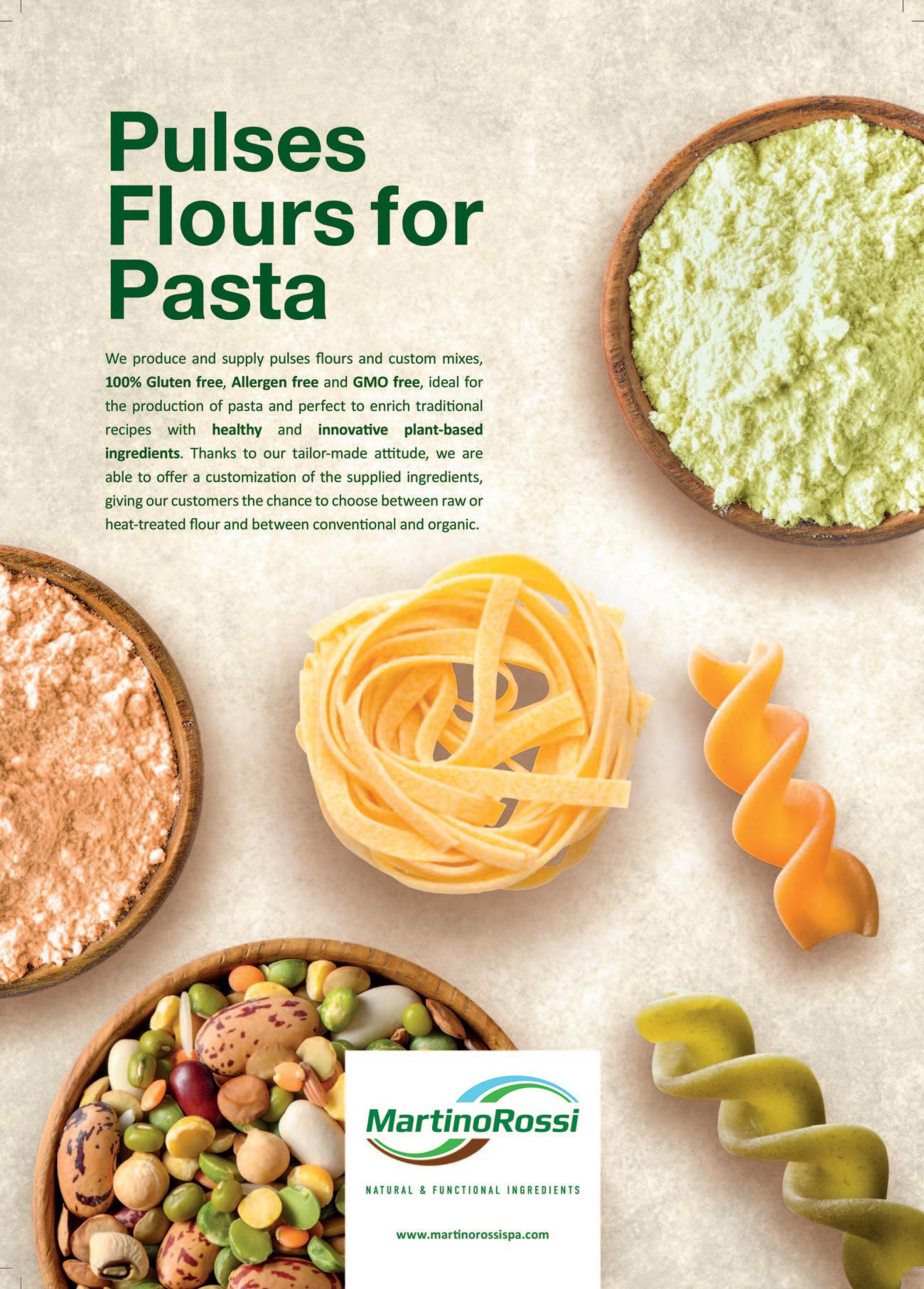
Energy saving and environmental protection mean a lot to Storci. We have decided to reduce the consumption of energy and water for cooking pasta with instant pasta systems, offering consumers quick and easy to prepare pasta. Since ancient times, pasta has always been an essential element of man’s diet. Over the centuries, its ability to adapt to changing lifestyles has remained unvaried. It is a natural, versatile product and adapts to everyone’s taste. When it comes to pasta, Italians are very traditional and know by heart all the steps for a perfect cooking. Currently, however, the water emergency is becoming increasingly pressing; thus, it is essential to link the concept of pasta to sustainability and
environmentally friendly cooking methods. Our instant pasta lines create a new, handy, healthy, and tasty product, ready in 3 minutes. Dehydrated pasta and sauce, in many different flavours, to get a ready meal at the office, at home, and suitable for everyone, workers, children, health-conscious people, vegetarians etc. Convenient and easy to prepare, instant pasta is cooked using some hot water and fuel. While cooking 100 g of traditional pasta requires 1 litre of water and a lot of heat (to heat the water and keep it boiling for about 10 minutes), instant pasta is pre-cooked and requires about 300 ml of boiling water without the need to keep it boiling. The savings are both in the smaller amount of water and in the preparation, which does not
require boiling in a pot. It’s less messy and you can prepare itanywhere there is a kettle or microwave. Storci Instant Pasta System is a complete system for producing instant pasta and provides a full solution for entering this dynamic and innovative market. Our extended offering ranges from small semiautomatic lines to large automatic systems. It is possible to integrate the system into an existing dry pasta line, with low costs and great advantages. In addition to production, we offer a series of associated services, from packaging to global consulting.

 edited by Storci
edited by Storci



In 1941, Fileno DeFelice wrote an impassioned and patriotic letter published in his local newspaper, the Spokane Daily Chronicle, about how his father Vincent came to America from his native county of Italy some 40 years earlier as a young man seeking a life-changing opportunity1. To realize his dream, Vincent, along with some partners and financial assistance from friends, started the U.S. Macaroni Company in 19162-3. The company was on N1214 Monroe Street in Spokane, Washington and business grew quickly, largely due to the curbing of European exports from World War I4. In May 1916, the company added a night shift to keep up with the orders5
In early 1920, the U.S. Macaroni Company purchased all the equipment from Montana Macaroni Manufacturing Company
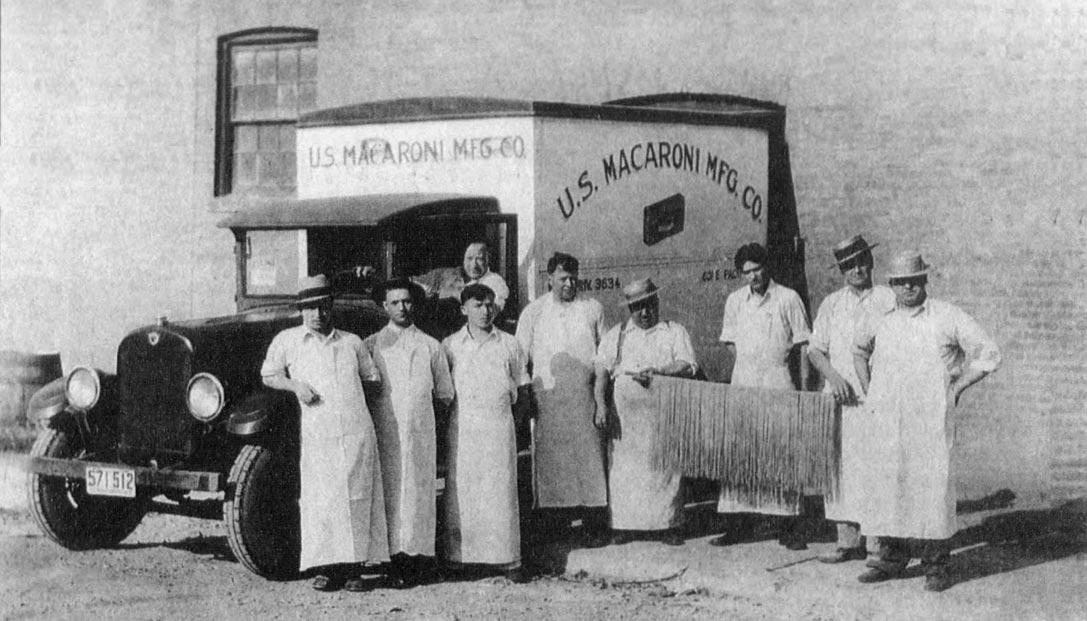
of Great Falls, which increased their production from between 2,000 to 3,000 pounds per day to about 10,000 pounds6. About three months later, the company purchased a building on East 601 Pacific Avenue. With the additional equipment and factory space, the company was now able to make five times more product than when it started just a few years earlier.
In 1945, Albert, Arthur, Fileno and Joseph, four sons of Vincent, acquired the company and brought it under the control of the DeFelice family8-9. During the Korean War in the early 1950s, the company supplied pasta to the United States Army, putting action to the words that Fileno wrote about in his 1941 letter regarding serving his country when called upon10-11.
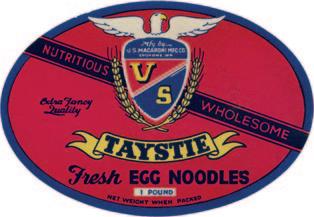
In 1989, Richard and Mary Clemson bought the company from the
DeFelice family12. At the time, the company produced 6,000,000 pounds annually with 17 employees, and sold under the Italian Chief and Betty Baker brands13-14. The pasta was mostly sold in West with some limited markets in the Midwest15. The name was changed to Pasta USA16
1. F. DeFelice, “Italian Native Dispels Rumors”, Spokane Daily Chronicle, Spokane, Washington, 56th year, number 72 (December 13, 1941), Fireside Edition, page 3.
2. Ibid.
3. “Fresh pasta for sale”, The SpokesmanReview, Spokane, Washington, 118th year, number 88 (September 6, 2000), page D10.
4. “Macaroni Factory to Work at Night”, Spokane Daily Chronical, 31st year, number 7 (September 28, 1916), page 14.
5. Ibid.
6. “Macaroni Plant to Be Increased; Has Big Output”, Spokane Daily Chronicle, 34th year, number 114 (January 31, 1920), page 10.
7. “Macaroni Firm Buys Building”, Spokane Daily Chronicle, 34th year, number 198 (May 8, 1920), page 8.
8. “DeFelice, Joseph A. obituary”, The Spokesman-Review, 123rd year, number 301 (April 7, 2006), page C6.
9. “Fresh pasta for sale”.
10. F. DeFelice, "Italian Native Dispels Rumors".
11. “U.S. Macaroni Awarded Fifth Army Contract”, The Spokesman-Review, 68th

An interesting anecdote occurred in 1919, which perhaps reflected the loyalty of the workers of the company. A deputy sheriff pulled over a truck carrying many U.S. Macaroni Company employees speeding on the Apple Way, and when no one would give their name, the deputy issued the citation to the whole company17. Ironically, the citation was issued to the company at the height of its “speeding” growth.

year, number 276 (February 14, 1951), page 6.
12. “Couple purchase macaroni company”, Spokane Chronicle, Spokane, Washington, 103rd year, number 82 (January 13, 1989), page A11.
13. Ibid.
14. Grayden Jones, “Pasta USA”, The Spokesman-Review, 113th year, number 186 (December 11, 1995), page A10.
15. “Couple purchase macaroni company”.
16. Ibid.
17. “Whole Company Cited for Speed”, Spokane Daily Chronicle, 33rd year, number 230 (June 16, 1919), page 3.
To subscribe to Professional Pasta visit the website www.professionalpasta.it




You can pay on line by credit cards: or by wire transfer to Banca Popolare dell’Emilia Romagna, Bologna, Agenzia 7, IBAN: IT 15V0538702406000000437531
From Ue:
IBAN Code: IT15V0538702406000000437531 / BIC Code: BPMOIT22XXX
Outside Ue: SWIFT BPMOIT22XXX - current account n. 437531




LAW CONCERNING PRIVACY - Your data will be collected and treated in observance of the L. 675/96, for eventual sending of publicity or promotional informations, which you authorize by subscribing the present form. In every moment, according to the art. 13 of the mentioned law, you will be able to consult, change, cancel freely your data or oppose its use writing to the owner of the treatment - Viale Antonio Aldini, 222/4 - 40136 Bologna - Italy
LAW CONCERNING PRIVACY - Your data will be collected and treated in observance of the L. 675/96, for eventual sending of publicity or promotional informations, which you authorize by subscribing the present form. In every moment, according to the art. 13 of the mentioned law, you will be able to consult, change, cancel freely your data or oppose its use writing to the owner of the treatment - Avenue media srl, via Riva Reno, 61 - 40122 Bologna - Italy
